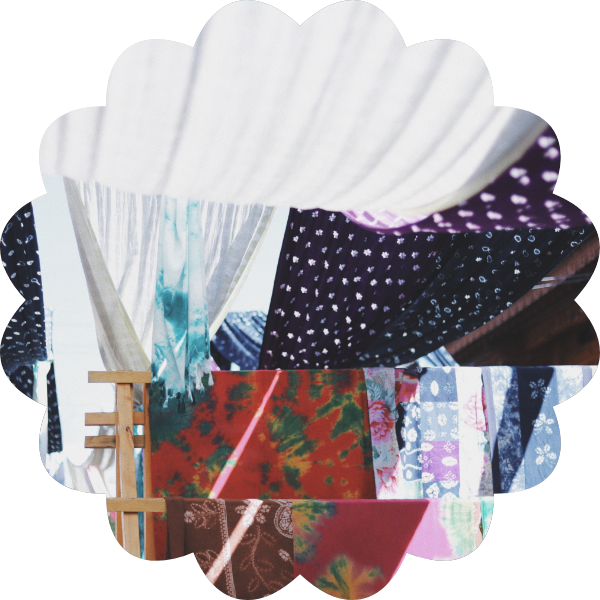Eco-Conscious Materials in Fashion
If we want new clothes, we should be savvier about the materials we buy | By Harvey James

Like many industries, fashion is a dirty business.
McKinsey’s 2020 report, Fashion on Climate, estimates that the industry spewed out around 2.1 billion tonnes of greenhouse gas (GHG) emissions in 2018, equivalent to the annual GHG emissions of France, Germany and the United Kingdom put together.
This is objectively bad.
Looking slightly deeper reveals that 70% of that total came from materials production, preparation and processing. This story is corroborated by the eco-trainers brand Veja. In 2019, they attempted to document their CO2 emissions for that year, revealing that their largest CO2 contributor was raw material production coming in at 71%.
Shifting to sustainable materials at scale would make a sizeable dent in fashion’s global environmental footprint, however, this also requires a change in consumer appetite. So, consider this a very brief consumer’s guide to some of fashion’s eco-conscious materials and why they’re considered better.
Organic Cotton
Cotton is one of the dirtiest and most prevalent crops grown today. It uses pesticides, synthetic fertilisers and a massive amount of water. So much in fact that the humongous Aral Sea Basin dried up between 2000 and 2014 due to the irresponsible water irrigation for cotton crops.
However, organic cotton is grown with more advanced farming practices without pesticides, synthetic fertilisers or chemicals. It is 50% less emissions-intensive, uses 62% less energy and 88% less water than conventional cotton. It is also 100% biodegradable. It is said that 2.5% of the world’s arable land is used for farming cotton, so achieving a large scale shift to organic would be massive for fashion’s GHG emissions.
Check certifications for fertiliser use, chemical processing and the safe working conditions of the farmers. Unfortunately, yields are lower, meaning prices would most likely increase to compensate.
Organic Linen
Linen is derived from the flax plant and requires very little fertiliser, pesticide, and natural irrigation (60% less water than cotton). The organically-grown crops cut out the chemical pollutants entirely. Flax can grow in soil that is not used for food production and, in some cases, can even rehabilitate polluted soil. Flax plants also have a high rate of carbon absorption. However, linen isn’t as high yielding as other crops, so it can also demand a higher price tag.
Recycled Polyester & Nylon
Buying recycled polyester/“rPET” prevents that plastic from ending up in landfills (or oceans). It is also around 40% less emissions-intensive and 70% less energy-intensive compared with virgin polyester.
However, some argue the plastic would have been recycled anyway and buying this material doesn’t prevent microplastic pollution (linked to increases in carcinogens and toxicity absorbed by the skin) through washing and wearing. rPET can only be recycled so many times before it too has to be discarded due to lack of quality and isn’t biodegradable. Look out for Econyl too—recycled nylon constructed from ocean plastics and abandoned fishing nets.
Recycled Cotton & Wool
Though recycling cotton requires energy, emissions and potential additional chemicals for re-dying, it is less damaging than virgin production. For example, 765,000 litres of water can be saved per ton of cotton recycled. Plus, it’s 100% biodegradable. However, it can be difficult to deduce whether it’s actually pure cotton because blends (of up to 4% other materials) can be used, and recycling can reduce fabric quality too. All of the same holds true for other natural materials, like wool.
Bamboo
Bamboo can be harvested without killing the plant, meaning crops can renew themselves quickly as the plant is one of the fastest-growing on the planet. Bamboo also sucks in more CO2 than some trees and can survive on rainfall alone. When buying bamboo-based materials, check whether these have been processed with chemicals. The ideal bamboo has been mechanically processed directly from raw organic bamboo (i.e. without having been plasticised).
Hemp
Hemp is a durable and soft material, which is great for sustainability and allows for high-quality products that last. It is grown with little or no pesticides and like bamboo, requires minimal attention while cultivating. It also doesn’t deplete the nutrients of the soil in which it grows and can be replanted time and time again.
Certifications: USDA-Certified Organic, Global Organic Textile Standard (GOTS), Organic Content Standard (OCS), Better Cotton Standard, , Bluesign, and Oeko-Tex 100”
Resources:
http://aboutorganiccotton.org/
https://sewport.com/organic-fabrics
https://www.sustainyourstyle.org/en/fiber-ecoreview
https://www.sustainablejungle.com/sustainable-fashion/sustainable-fabrics/
https://www.ruthmacgilp.com/blog-list/killer-cotton
https://project.veja-store.com/en/single/emissions/
Guide written by Harvey James (@harvjam)

